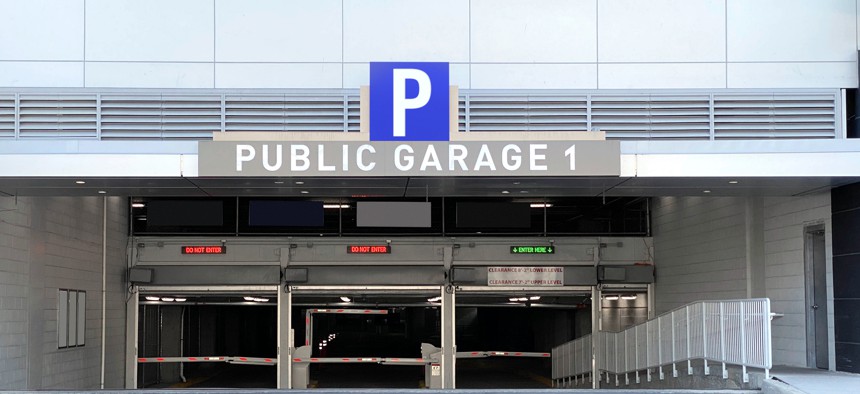Retrofitting Parking Garages Could Help With Affordable Housing Shortage

Retrofitting unused parking garages to residential space could solve the nation's housing shortage. iStock.com
COMMENTARY | As Covid-19 shattered normal commuting patterns and center city parking use, some are investigating how high-rise garages and parking lots can be converted to provide space for housing.
Long before the pandemic, America was facing a housing affordability crisis. At the same time, another unrelated trend was taking place—a combination of the increased use of app-based ride-booking services, more people living within walking or biking distance of their workplaces, and an incredible rise in online shopping. Those factors cut demand for parking spaces in central business districts and suburban retail centers.
Then Covid-19 hit. Overnight, our country went from being a commuter driven society where office workers spent 30 to 90 minutes on average just getting to or from work each day, to one where many people with desk jobs are now working from home. E-commerce expanded even more. And parking lots that were already underused are now even emptier.
Meanwhile, because of the economic upheaval the virus caused, millions of Americans, many of them in lower-wage and service jobs, were cast into greater financial peril, struggling to buy food or keep a roof over their families’ heads.
There are about 328 million residents in the U.S. and more than 500 million parking spots. With Covid-19 accelerating housing shortages and causing profound changes in driving patterns, the time is now for planning and zoning boards nationwide to consider how parking can be converted to residential space.
For parking lot operators, the pandemic means they are now saddled with even more unused garage space than they had before and little hope of ever getting back to the “lot full” levels they previously enjoyed, especially with expanded remote work expected to continue even after the virus outbreak is over. Recently, a major garage operator in Washington, D.C. was forced to file for bankruptcy because of the virus-driven economic downturn.
But the pandemic has also highlighted opportunities for alternative ways parking facilities can be used. Lots and garages have been adopted for temporary use as seating for local restaurants and food trucks, pop-up industrial warehouses and even outdoor theaters.
Coupling the success of these initiatives with the housing affordability issue, some parking lot operators are now urging jurisdictions to consider retrofitting under-used garages to provide moderately priced or low-cost living space for families who have lost their homes or apartments.
Architectural firm Gensler, for example, has pioneered the use of pods, inexpensive living units that plug into parking structures as an effective way of dealing with housing shortages.
Redeveloping these garages, of course, is not without its challenges.
Many cities have parking minimums built into their zoning codes, which require developers to include parking in all of their properties. Los Angeles, for example, currently requires developers to include between one and two parking spots per new unit built. Developers can also run into inflexible zoning requirements that prohibit converting a commercial property, such as a parking garage, into a residential property of any kind.
Beyond zoning issues, retrofitting parking garages can present problems. Garages simply weren’t designed for people to live in. Low ceilings, sloped floors and an inability to handle the same weight loads all combine to make parking lot conversions more difficult than new construction. So do local and state regulations, such as California’s seismic standards, which are vastly different for parking lots than for office or apartment buildings.
Despite such issues, existing garages, often with nearly universal dimensions based on a parking space, allow for prefabricated modules to be easily placed within the facilities’ concrete shells. These units can also make use of the already present vertical circulation and utility connections within the garage.
Examples of such successful retrofits include a former parking garage in Wichita, Kansas that was converted into an apartment building containing 44 studios, each measuring about 650 square-feet. In Boston, a former surface parking lot is now the site of a 30-story high-rise featuring affordable housing.
Enabling parking garages to be redeveloped as moderately priced dwelling units, promises to help put our country in a significantly better position to solve longstanding problems with affordable housing and homelessness that the pandemic has brought into even sharper focus.
Wes Guckert, PTP is president & CEO of The Traffic Group, a leading Service Disabled Veteran-Owned Small Business traffic engineering and transportation planning firm serving clients nationally and internationally. He is also a Fellow of ITE and Instructor at Harvard University. For more information: www.trafficgroup.com or follow them on Twitter @TheTrafficGroup.
NEXT STORY: Analysis: One Way or Another, Texans Will Get the Bill for Fixing the Electric Grid





